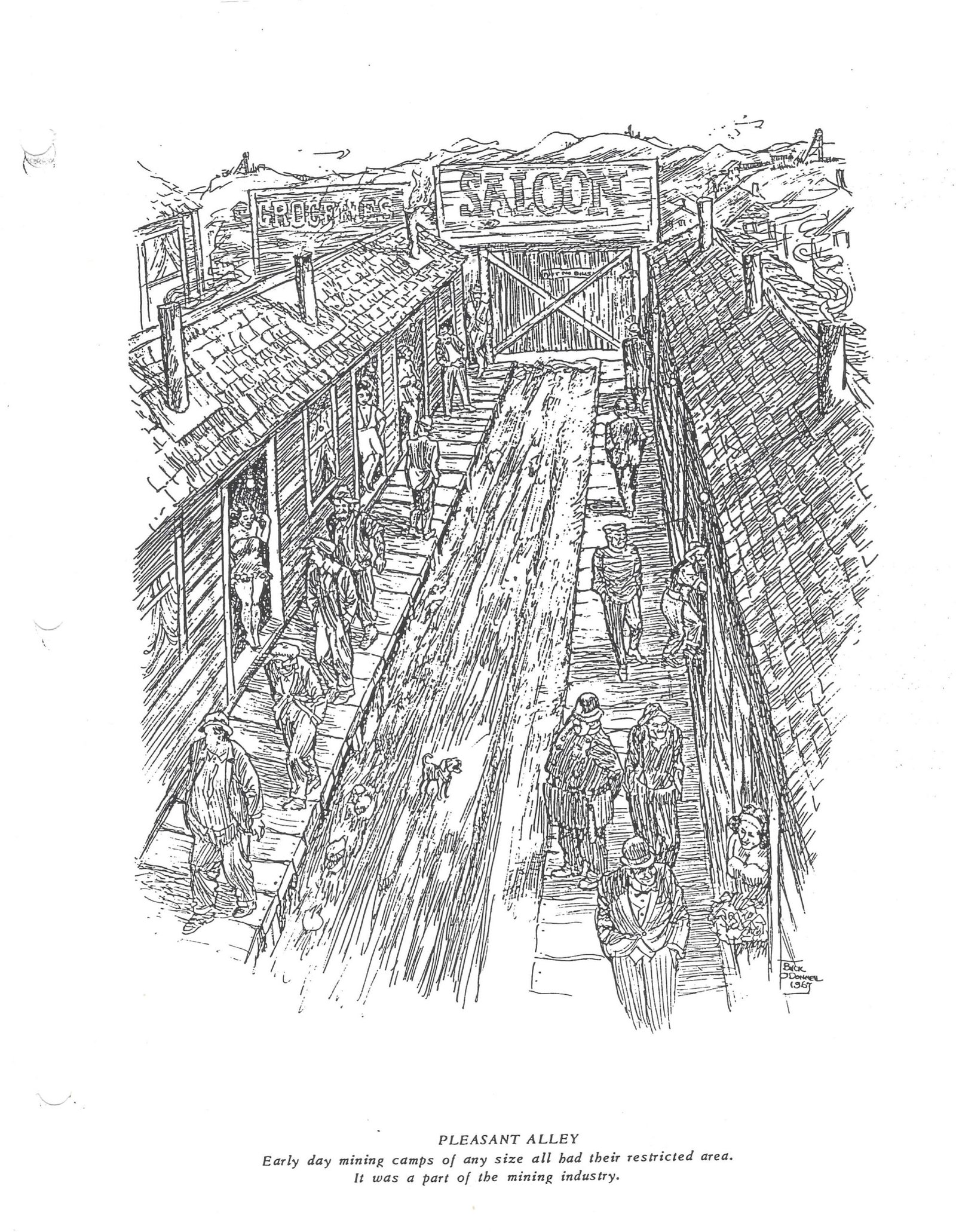(Ink illustration by Buck O’Donnell in 1967; public display, World Museum of Mining, Butte, Montana, USA)
Dozens of establishments in Butte, Montana had stockpiled liquor prior to prohibition. Furthermore, the Anaconda Mining Company (ACM) wanted to keep their miners’ content by providing a wide selection of drinks and entertainment behind the scenes, despite the laws in place. Due to its isolation, laws were usually not strictly enforced in Butte, so many ‘speakeasies’ sprang up throughout the city, offering smuggled beer and whiskey. Some of the bootlegging was even done by women.
Butte, with its lucrative copper mines, served up more alcohol during prohibition than any other city in the country. ACM made sure to keep their miners’ content by providing a wide variety of entertainment in the open and behind the scenes.
Butte had two cities, one underground and one above. In the tunnels below the hill, miners endured terrible working conditions to keep the copper flowing. When they surfaced, they let loose in the saloons and brothels, and the booze began flowing.
It was a city of opportunities, and this was particularly evident in the widespread vice that had become a common feature of the mining town. The city had a permissive attitude towards the misdeeds of its miners, turning a blind eye to their behavior. If not encouraging, it.
The old Atlantic Bar, which touted itself as the longest bar in the world, was a full block in length and had fifteen bartenders serving the customers. Claiming that on a busy Saturday night, twelve thousand glasses of beer were sold to the thirsty miners.
All forms of moral corruption were accepted. The town was famous for its prostitution, saloons, and opium dens, which were used by miners to pass the time between work shifts. Offering an outlet for the men to cope with the stress.
These establishments of moral decay were delegated to a specific part of Butte. These pockets of pleasure were in alleys or found on just a few streets in town. Customers could select a prostitute based on their financial means, and the quality of the woman would vary accordingly. The girls serviced the needs of the miners and there were very few reported cases of violence or sexual assault against the women of Butte.
A popular ballad of the time went, “First came the miners to work in the mine, then came the ladies who lived on the line.”
By 1884, the first street devoted to prostitution was established in a small area near the main street of the town. In 1903, the City Council ordered the relocation of prostitution to the alleyways.
It was estimated that during the period from 1904 to 1917, as many as a thousand prostitutes worked in this district at any given time, making it one of the largest red-light districts in the United States, second only to San Francisco’s Barbary Coast.
On hectic weekends or payday nights, up to four thousand men could be seen on the “Board Walk,” “Paradise Alley,” or other promenades that made up this area. It was observed that married men were equally likely to visit, with one woman remarking that “if it weren’t for the married men, half us girls would starve to death.” Arthur though sometimes tempted never strayed.Top of Form
Wesley Davis in his book Sketches of Butte, described it as “a street leading into hell. “He saw young men, boys, and old men wandering about, girls in the doors and windows soliciting in honeyed words, and young girls who should have been in school. The street was a melting pot of different races and colors, with every vice imaginable on display.”
By the time of the wave of reform began sweeping across the country, and made its way to Butte, there were fewer than fifty women working in these alleys. And by 1922, the vice was beginning to diminish.
Arthur observed the changes taking place in Butte as reform set in. The saloons that had never closed began to lock their doors and display closed signs in their windows. The women were finding it increasingly difficult to ply their trade and many had already left town. The opium dens, though still in existence, had become the most secretive of all. Hidden behind closed doors in abandoned tunnels.

